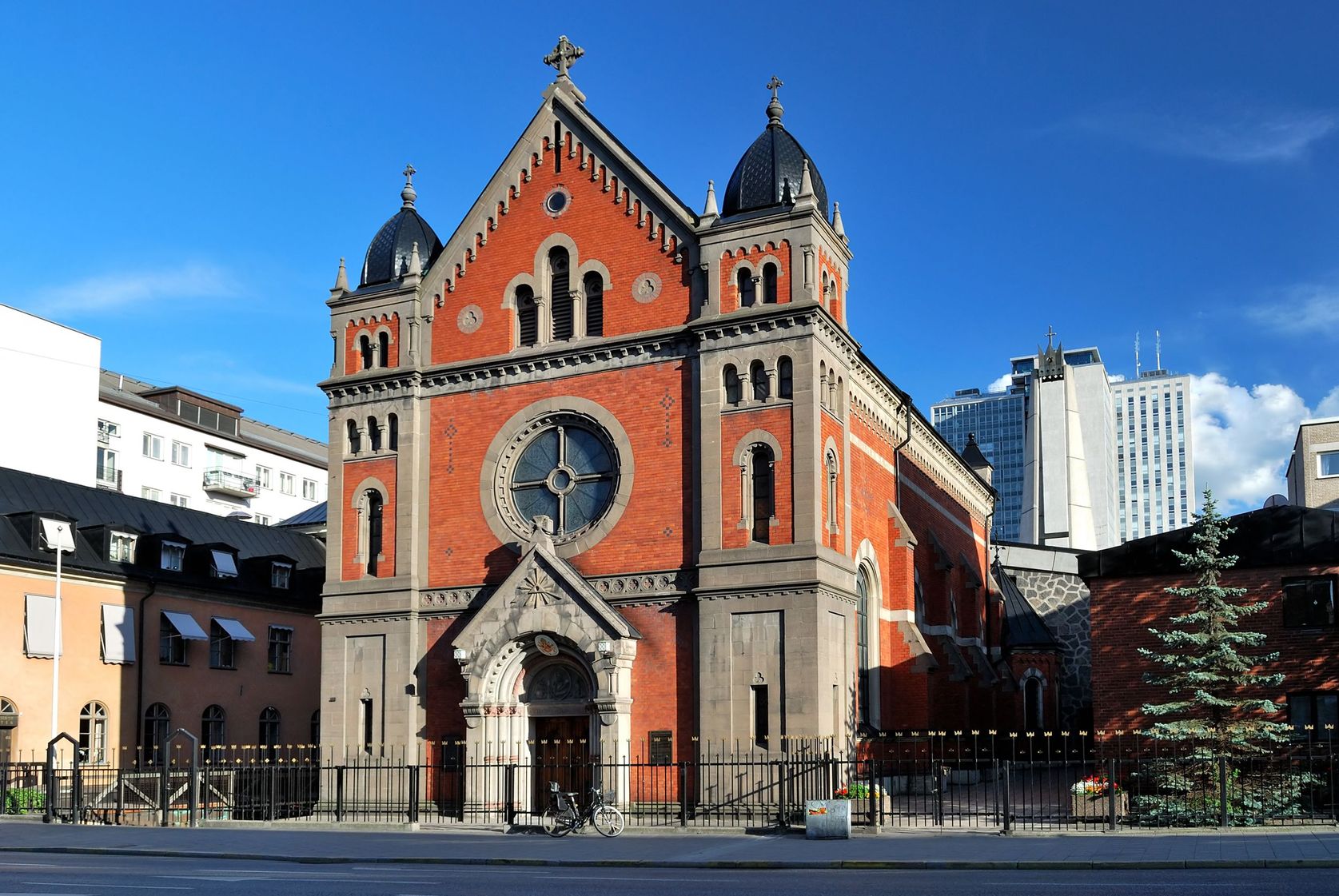
Sweden was once a Catholic country. Due to influences from religious orders such as the Cistercians, Franciscans, Dominicans and even some Carthusian convents, Sweden became a truly Catholic provenance during the fourteenth and fifteenth centuries. We had even our own founder of an order, Saint Bridget, patron of Europe.
However, all was violently interrupted by the Lutheran Reformation at the end of sixteenth century. During several hundreds of years there were no Catholic churches and of course no Marian shrines. But a renewal is now beginning in Marian devotion that is connected to a certain church, even if today it is not officially approved as a shrine.
At the beginning of the 1980s the Dean of Stockholm’s Catholic Cathedral, Msgr Johannes Koch, had a vision. He could never let go of the thought that in 1917, Lenin had spent one day in Stockholm, and then went to Russia to start his ‘godless revolution’. Through his contacts in Moscow, Dean Koch knew that the hopes of the Christian had been awakened and that the godlessness would be overcome, as Mary had said during the visions of Fátima in 1917. They were convinced that once the icon known as Our Lady of Kazan returned to its people, that it would see the end of atheism in Russia. According to the vision of Msgr Koch, the icon was to be kept here in Stockholm until then. He even tried to convince the Blue Army in Fátima that the Kazan icon there should pass through Stockholm on its way to liberating Russia, but that was impossible.
After much searching, Msgr Koch indeed found an icon of Our Lady of Kazan, in Bavaria. It was in private hands and for sale. The history of this icon is unknown. After the takeover of Russia by the Communists in 1917, many objects belonging to the church were destroyed or sold in the West.
The image is of the Holy Virgin holding the standing Child Jesus who has lifted his right hand as a blessing. The icon has a so-called ‘risa and tsata’ (a necklace) in silver with gems and is of the Kazan type.
A girl who had had a vision of the Virgin Mary found the first icon of this type on 8 July 1579 in Kazan, capital of Tatarstan, on the mid-Volga. Immediately more accounts of this icon were received. Prayers have been frequently said before this Marian icon and god has granted many favours. The original icon was stolen from the Cathedral in Kazan in 1904. There are many, sometimes contradictory, stories about what happened to the original icon and to the early versions.
This icon was consecrated in 1984, using a Byzantine rite by Rev Johannes Düsing, who lived in Jerusalem. On 15 August 1988 the icon was solemnly dedicated.
That very same year a group of laymen started to pray the Rosary on the first Saturday of every month according to the July 1917 apparition of Our Lady of Fátima.
In July 1989 St Pope John Paul II visited Sweden and prayed to Our Lady of Stockholm. In November of the same year the wall fell between East and West Berlin. The ‘system of godlessness’ ceased in Russia in 1991 and the Kazan church in Moscow’s Red Square, which had been demolished, was rebuilt.
In a small chapel in the Catholic Cathedral of Stockholm, the icon Our Lady of Stockholm now has a place of honour. The icon is surrounded by precious relics from many saints, among them St Jerome, St Teresa of Ávila, St Bridget and Blessed Liborius Wagner. Under the icon is a map of the Södermalm island of Stockholm, were all Christian churches are marked with gems and gold, donated by members of the parish.
Later surveys have discovered that this might be one of the oldest Kazan icons in the world, older than the one that was originally kept in Fátima.
There is an element of devotion to Our Lady of Stockholm, but this is modest, due to ignorance. But during every Holy Mass there are always people praying before the icon.
The special feast day of Our Lady of Stockholm is 20 September.
Copyright 2023 © Worldpriest.com. All rights reserved. Website by KOBBA - The Creative Marketing Agency
